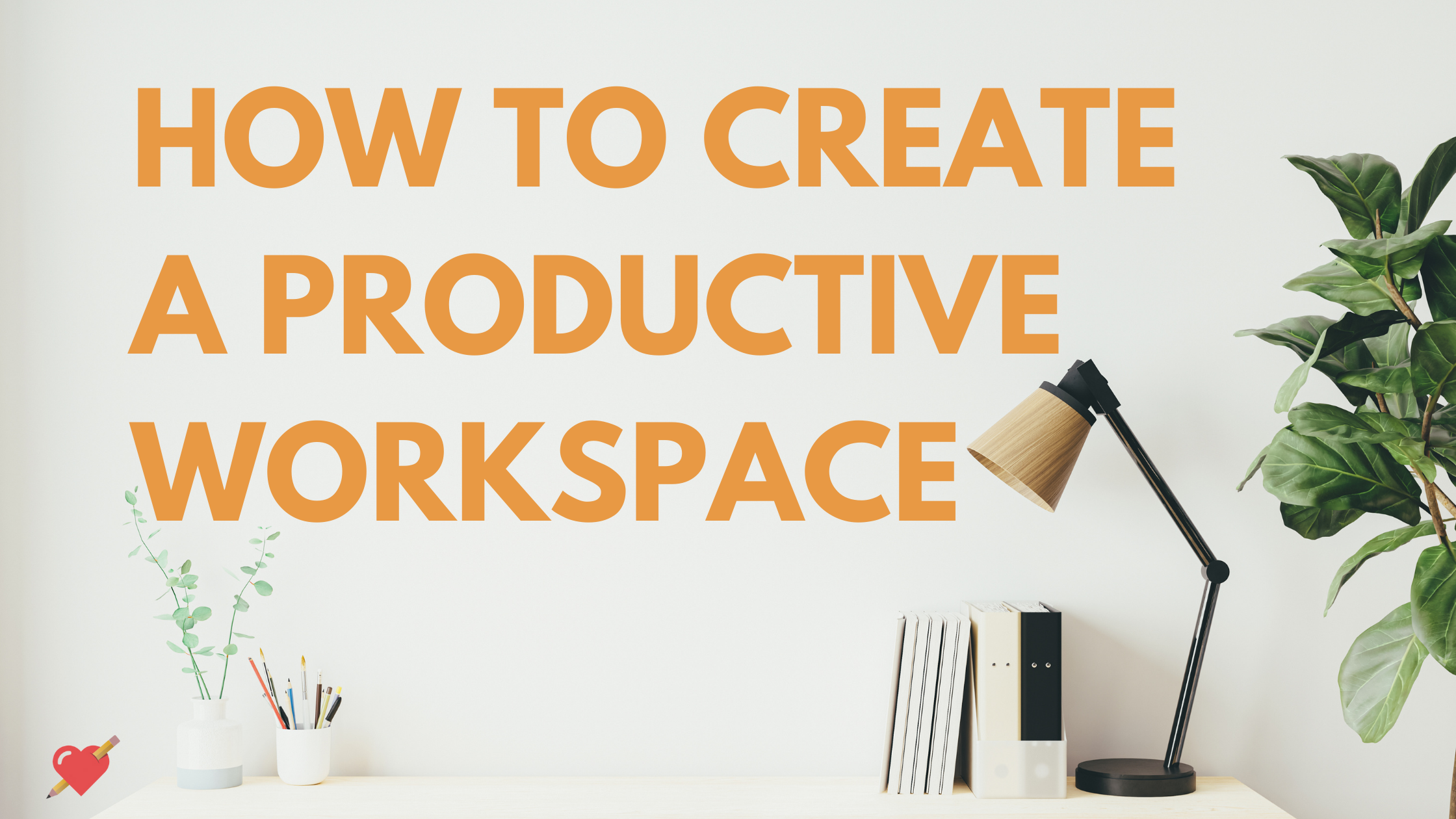How to Create a Productive Workspace
If you’re a teacher transitioning to work in education beyond the classroom, you might wonder how to create a productive workspace at home (and how you will fit all of your “teacher things” in a small corner of your home or apartment!).
It’s incredible how much stuff we accumulate over the years. But when you work flexibly, less is really more. All you really need is to set up an intentional and productive home office space that allows your brilliance to shine through (and a solid internet connection).
Every educator’s circumstance and living space is unique, so we’ve created tips to meet you where you’re at! Keep reading for work-from-home office inspiration for your workspace.
Prioritize Your Needs for a Productive Workspace At Home
As educators, many of us consider the environment the third teacher, and it’s no different for grown-ups! Here’s a simple checklist of work-from-home office essentials that can support you in optimizing your productive workspace.
Consider the basics.
Don’t overlook the small stuff! Choose a desk and chair that will help you stay comfortable. Some folks prefer traditional seating options while others benefit from more flexible seating. One of the biggest shifts from classroom teaching to flexible work in education can be increased time sitting down, so don’t skimp on comfort! Invest in yourself to create a productive workspace at home.
Personalize your scheduling system.
After working with hundreds of educators through our Beyond the Classroom course, Curriculum Development Foundations program, and Grow Your Education Business Accelerator, we’ve found that everyone has different preferences about planning their days.
If you’re trying to decrease clutter (and your paper trail), you may prefer online tools like Asana to manage multiple projects. Or, you might schedule meetings through Google calendar and create a weekly workflow using a Google document.
Other educators find it pleasing to write down their weekly commitments using a creative planner or large whiteboard that’s visible in a central location.
Create mindful moments.
Part of learning how to create a productive workspace at home is being mindful of how much time you’re spending in front of a screen. One way to combat screen fatigue is infusing mini moments of self-care to support your well-being.
Other suggestions to nourish yourself include:
If you have writer’s block, set aside ten minutes to enjoy a guided meditation like this one with Jessamyn Stanley.
Download an app like Calm, Insight Timer, or Headspace to decompress during breaks.
Keep small protein-filled snacks in a basket near your desk and a large glass of cool water or tea to sip on throughout the day.
Get outside when you can!
Make your story visible.
Are you an international educator with beautiful photos of your experiences? Or an educator who saves your most cherished pieces of student artwork? Don’t just throw away all of your treasures from the classroom because you are transitioning into something new.
Instead, make your story visible in your workspace! This will look different for everyone, but creating a photo book, collage of student art, or placing meaningful awards on the walls can create a haven that celebrates you and all of the important things you’ve done (and will continue to do) during your years spent making a difference in education.
Having visual representations of what is important to you is one of the most important parts of a productive work-from-home office setup.
Simplify Small Spaces for a Productive Workspace at Home
Sharing your living space with roommates or family members? Not a problem! It’s possible to plan ahead to minimize distractions like kids running around, partners taking phone calls, and dogs barking at the delivery truck.
Ground yourself.
Think about items that will support you in staying focused in your work-from-home spaces when other things are going on around you.
Ideas include noise-canceling headphones, background music (I prefer classical, reggae, meditation, or jazz), and setting up your work time so it’s during the quietest time of the day (e.g., nap time or while the kids are at school).
Consider purchasing some indoor plants to soothe and restore yourself. Plants make us happier along with many other research-backed benefits! Ultimately, it’s all about optimizing your productivity while staying sane along the way.
Get organized.
All of that educational research you compiled into binders during college, (and the books that you pull out to dive into inquiry-based learning throughout the year), don’t need to take up prime real estate on your desk. Clutter definitely doesn’t make for a productive workspace at home!
Alternatively, keep project-specific books close by and figure out a way to store your tried and true books in a small bookcase, chest, or closet. Think about investing in a Kindle to dive into research related to your new position or storing resources on your Google drive or desktop.
The main thing to consider is how to access everything you need while also keeping your work-from-home office setup clutter-free.
Design a Collaborative Workspace With Young Kids In Mind
One of the most frequently asked questions we get is how we manage contract work with small kids at home. After all, you can learn all you want about how to create a productive workspace at home, but none of it matters if your kids are interrupting you!
We admit it takes a bit of flexibility and out-of-the-box thinking to work with kids at home, but tapping into your teacher skills can help!
Simple, open-ended toys.
If you have to work when your kids are home (it’s inevitable at some point) you’ll want to gather simple, open-ended toys that can entertain your child.
0-2 years old: large play mat, mirrors, scarves, safe teethers for exploration, board books, and playpen
2-5 years old: Wooden blocks, Magna-Tiles, coloring materials, picture books, and small animal figurines
5-8 years old: Sticker books, puzzles, writing journals, legos, or access to an online device (this is a great time to utilize screen time for the day!)
Accessibility and independence matter.
When you set up your child’s area near your workspace, remember that they should be able to access and put away the toys on their own (with the exception of very young children who will need your support!).
Using baskets from thrift stores or multi-drawer storage containers can be helpful and make clean-up easier. Prepare children for busy days by integrating time for independent play in your daily flow, even when you aren’t working. Even babies benefit from playing solo!
Finally, if you have a meeting scheduled while you’re on parent duty, don’t stress. Prioritizing your family shows companies that you're invested in the emotional well-being of your child(ren) – and other kids, too.
Need More Work From Home Ideas for Teachers?
Whether you need more tips on how to create a productive workspace at home or you’re still in the classroom and looking for alternative careers for teachers, the Beyond the Classroom community can help.
In Beyond the Classroom, get expert guidance on transitioning out of the classroom and connect with other educators navigating the world of work-from-home, freelance jobs in education.
Still have questions? Contact Educator Forever to learn more.

